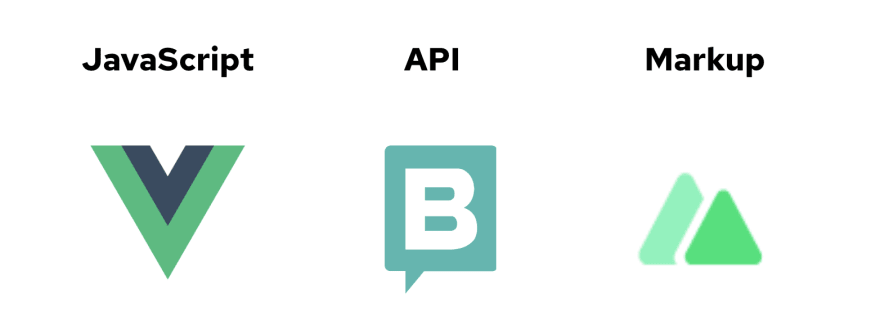jamstack每天都变得越来越受欢迎,所以我决定尝试一下,看看这是否真的改变了现代网站的构建方式。我不能说这对我来说是一个改变游戏规则的人(但这只是我的意见),因为我已经看到了现代开发中的几种不同的方法,我发现像Headless,Zerojs,Island架构,服务器组件等更有用。如果您认为它们有用,我可能会稍后写这些概念,让我知道;)
让我们回到最初的话题,我认为在我看来是什么构建Jamstack应用程序的梦想堆栈。
如果您对本文的更多视觉说明感兴趣,我对此主题进行了讨论,您可以在下面查看:
jamstack
jamstack是一种架构方法,可将网络体验层与数据和业务逻辑分解,提高灵活性,可伸缩性,性能和可维护性。
您可以在此处查看有关此概念的更多信息 - > https://jamstack.org/
在我们的情况下,我们将使用以下技术用于JavaScript,API和Markup
我们的果酱
我们将使用NUXT 3作为我们的主框架,NuxtContent(能够编写Markdown),一点点tailwindcss样式和StoryBlok,这将是我们的API。最后,我们将将应用程序部署到Vercel。
您可以在下面查看所有这些工具和技术:
- https://nuxt.com/
- https://content.nuxtjs.org/
- https://tailwindcss.nuxtjs.org/
- https://www.storyblok.com
- https://vercel.com/home
代码
下面,我添加了一些我发现本教程最重要的代码段。完整的代码可以在此处看到 - > https://github.com/Baroshem/jamstack-storyblok-nuxt以及在顶部链接的视频中。
我们将使用下面的vue.js组件显示猫的图像。它以后将用于静态数据和从Storyblok获取的动态数据:
// components/content/CatImage.vue
<template>
<div class="flex flex-wrap w-1/3">
<p>{{ title }}</p>
<div class="w-full p-1 md:p-2 relative">
<img
class="block object-cover object-center w-full h-full rounded-lg"
:alt="title"
:src="src"
>
</div>
</div>
</template>
<script setup lang="ts">
const props = defineProps({
src: {
type: String,
required: true,
},
title: {
type: String,
required: true,
}
})
</script>
此组件接受两个用于猫的单独图像的道具(SRC和标题)。
除此之外,我们还创建了一个画廊组件,用于显示从Storyblok获取的一系列猫。
// components/content/CatImageGallery.vue
<template>
<section class="overflow-hidden text-gray-700 ">
<div class="container px-5 py-2 mx-auto lg:pt-12 lg:px-32">
<div class="flex flex-wrap -m-1 md:-m-2">
<cat-image
v-for="image in story.content.body"
:key="image.id"
:title="image.title"
:src="image.src.filename"
/>
</div>
</div>
</section>
</template>
<script setup lang="ts">
const story = await useAsyncStoryblok("home", { version: "draft" });
</script>
最重要的文件是index.md文件,我们正在创建由正常的.md内容,带有本地数据的vue.js组件组成的内容,以及一系列cat映像,并从Storyblok中获取了数据。
// content/index.md
# Testing Nuxt Content
*Hello from Nuxt Content*
:cat-image{src=https://a.storyblok.com/f/126375/600x644/497572edee/cat-dog.jpeg title="My Favorite Cat from Markdown"}
:cat-image{src=https://a.storyblok.com/f/126375/600x644/497572edee/cat-dog.jpeg title="Second Favorite Cat"}
:cat-image-gallery
感谢此,我们现在能够将三个JAM元素(JS,API,Markup)与Vue.js组件,.md内容和来自Storyblok的数据一起使用。
为了查看实际结果,我们需要将以下组件添加到我们的主应用程序中。
// app.vue
<template>
<div>
<ContentDoc path="/" class="prose text-left" />
</div>
</template>
也是。不要忘记将以下配置添加到nuxt.config.ts。没有它,这一切都将无法使用;)
// nuxt.config.ts
// https://v3.nuxtjs.org/api/configuration/nuxt.config
export default defineNuxtConfig({
modules: [
'@nuxt/content',
'@nuxtjs/tailwindcss',
["@storyblok/nuxt", { accessToken: process.env.STORYBLOK_ACCESS_TOKEN }]
],
})
概括
做得好!通过遵循此简单的教程,您已经设法创建了一个由静态.md内容,vue.js本地数据和从StoryBlok获取的动态数据的CAT Image Gallery应用程序。让我知道您是否希望我深入研究Jamstack生态系统,我将完全做到!

